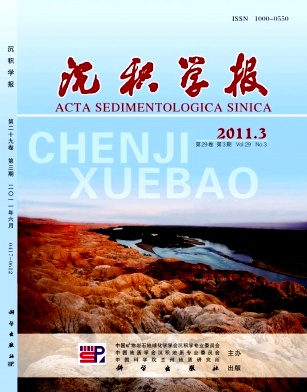The Chronology and Characteristics of Sediments Since Late Glacial in Huahai Lake, Hexi Corridor, NW China
- Received Date: 1900-01-01
- Rev Recd Date: 1900-01-01
- Publish Date: 2011-06-10
-
Key words:
- the Late Glacial
Abstract: From the profile which is located in the Hexi Corridor, NW China. 13 samples were collected for conventional 14C dating and 5 samples were collected for AMS 14C dating. The materials used for 14C dating were seeds, mud and wood. Based on the dating results, we reconstructed the age framework of Huahai Lake since the Late Glacial period. And then, we concluded that the sediments between 0.73~6.83 m were deposited during Holocene. Between
6.83~7.35 m, the sediments were deposited during the early Holocene and the late Younger Dryas.The sediments of 7.35~10.44 m were deposited during the Late Glacial and early Younger Dryas. Based on the mineral analysis of the sediments during the Younger Dryas and late glacial, mirabilite was the main component in the sediments, indicating the lowtemperature environment. According to the chemical composition analysis , the main ingredient of the pure mirabilite deposition is Na2SO4 ·10H2O, which is an indicator of the colddry environment; and the lower the temperature is good for the mineral crystallizing processes. The solubility curve of SO24 in Na2SO4NaClH2O indicated that, in low surrounding temperature, the concentration of SO24 was lower in saturation Na2SO4, and simply increasing the lake level could not improve the ability of mirabilite solution, which was not powerful enough to break off the deposition. The main reason of the interruption for mirabilite deposition may be transient warming events. Therefore, the rhythm deposition formation of mirabilitesiltmirabilite indicated the periodic changes of temperature during the late glacial and the Younger Dryas. According to the characteristics of the sediments and lithology, we reconstructed the millenniumscale effective moisture conditions during the Holocene period. Before 10.47 cal ka BP, the sediments color appears dark brown, purple brownbased, indicating a typical oxidizing environment,and this oxidative environment can not appear in the deep lake environment. There are no obvious lacustrine depositions layers at the beginning of Holocene(before10.4 cal ka BP), 6.30~3.73 m, and instead the layers are formed mainly on alluvial and eolian depositions, while the eolian depositions layers sandwiched between two alluvial depositions layers.The climate was relatively arid, and the alluvial and aeolian sediments prevailed during this period. Between 10.47 cal ka BP and 8.87 cal ka BP, the climate changed from arid to humid. During 8.87~5.5 cal ka BP the lake was relatively deep, and the climate was relatively humid. From 5.5 cal ka BP, there was little sediment in the section, showing that the lake became to dry up since then. This Holocene environmental change in millenniumscale was different from the westerlies in the arid Central Asian areas, but it was not the same as the environmental change in the eastern part of China, which was controlled by Asian monsoon. So the Holocene environment of the Huahai Lake region was affected by the Westerlies and the East Asian monsoon.
| Citation: | WANG Naiang. The Chronology and Characteristics of Sediments Since Late Glacial in Huahai Lake, Hexi Corridor, NW China [J]. Acta Sedimentologica Sinica, 2011, 29(3): 552-560. |






 DownLoad:
DownLoad: